A Huge Shift in Global Population is Coming – Africa To Overtake Europe.
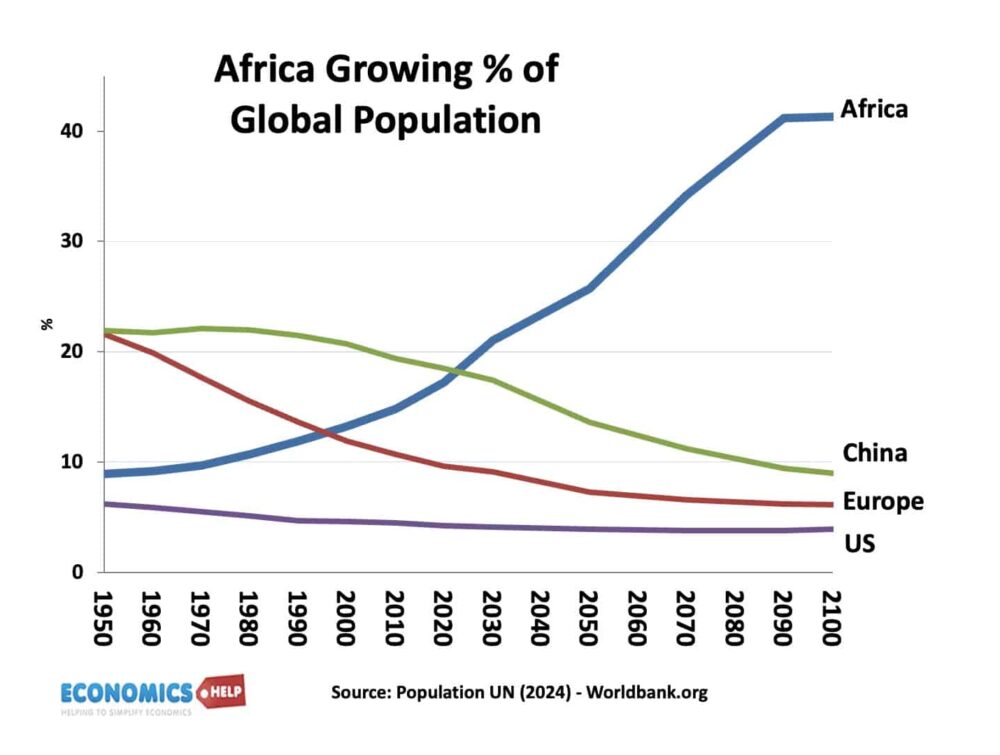
The world is going to change dramatically over the next 50 years. Currently, Africa has around 18% of the global population, but by the end of the century, this will rise to 42%, with big drops expected in Europe, Asia and America.
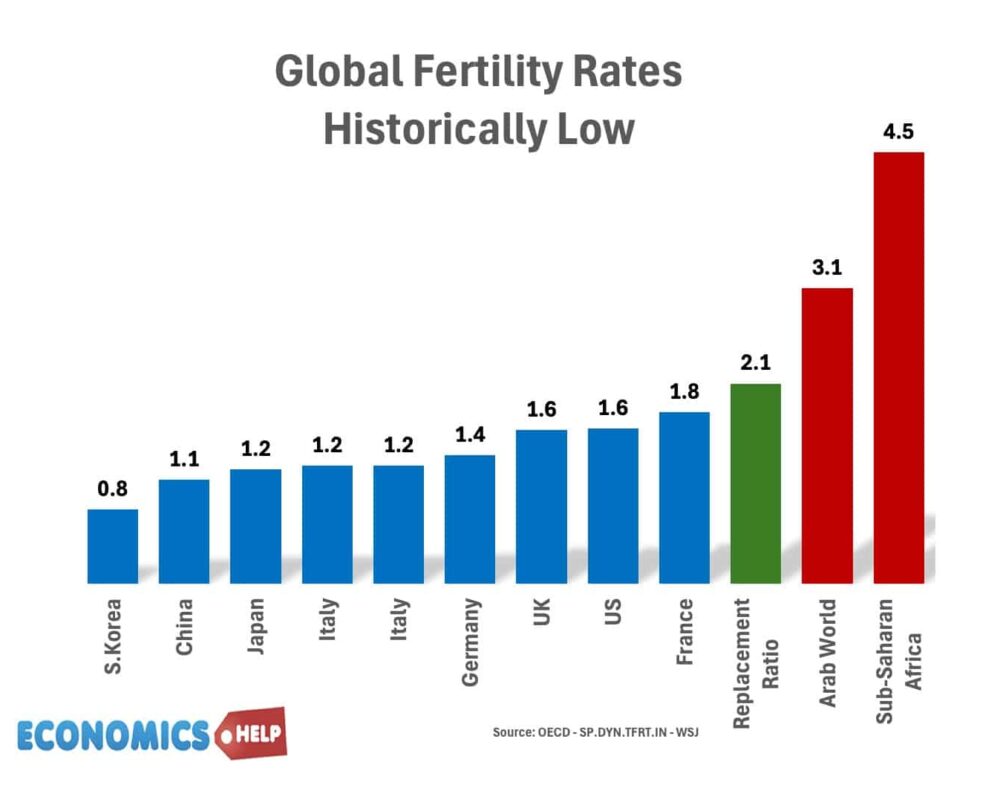
Fertility rates are plummeting around the world, but especially in Europe and Asia. In fact fertility rates have often fallen much faster than previous official expectations. The result is that population predictions are closer to the most pessimistic scenarios. All advanced economies have a fertility rate of less than the replacement rate. It is only the Arab world and Africa where fertility rates are sufficiently high to cause a rise in the population.
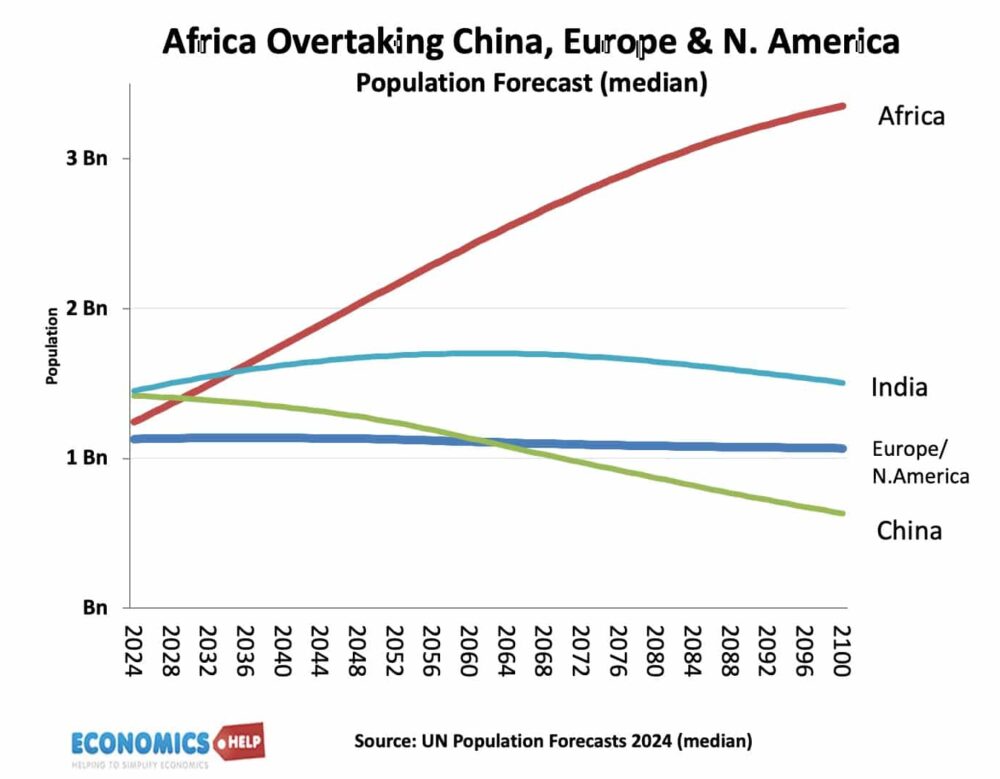
The latest UN forecasts suggest that the population of Africa is set to nearly triple to over 3 billion by the end of the century. This contrasts with a decline in China, Ameria and parts of Europe. By the end of the century, there will be more people in sub-saharan Africa than the combined total of Japan, Europe and North America. And it’s not just about declining population in Europe, it’s also an ageing population.
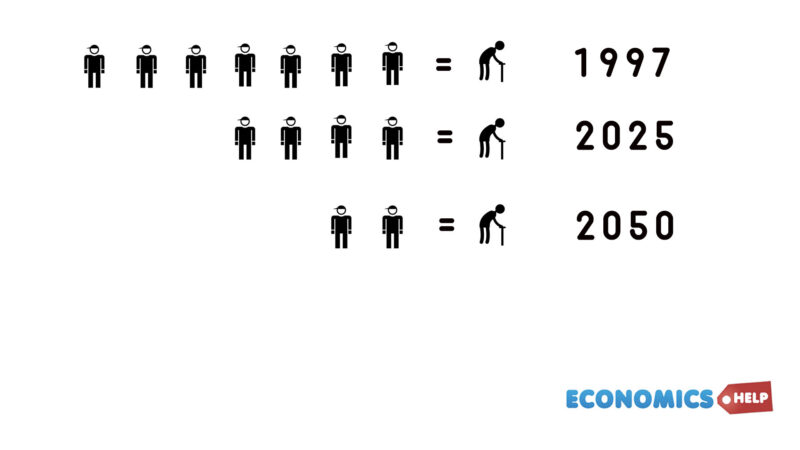
If we take regions experiencing the first wave of falling fertility – US, China, Europe and Japan, in 1997, the average support ratio of working age people to those over 65 was 7:1. In 2025, that is 4:1. By 2050, it will be just 2:1. There is no precedent in world history for such a rapid drop in the working age population, there is a vague idea that technology and AI will replace a lot of manual jobs, possibly but will there be enough care workers, doctors and nursing to deal with the rapidly ageing population? Then on top of that there is the economic costs of an ageing population, the unwelcome arithmetic of a declining tax base, but higher spending on pensions and health care.
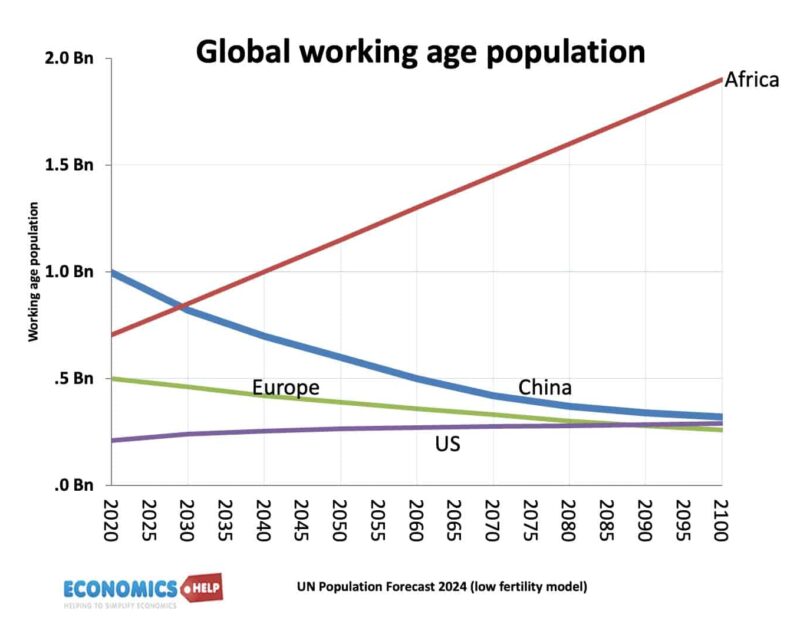
If we compare working age population, the difference is going to be even more stark. But, the end of the century. China, Europe and the US will have a combined working age population of 870 million, Africa will be just under 2 billion.
Emigration from Africa
Given a shortage of workers, shrinking tax base, and a growing number of old people needing social care and health care, one solution will always be to look to Africa and its large pool of young workers. Already, Europe is seeing greater levels of legal migration from Africa than in previous decades. Africa has already seen a rise in migrants living outside Africa from 6 million to 20 million. Despite nativist and anti-immigration sentiment, the Italian PM Giorgia Meloni has increased the number of non-EU work visas. The need for care workers can become greater than the preference to avoid immigration. Even Japan and South Korea who have for long restricted migration, are starting to relax very strict visa rules, with immigration starting to pick up, not surprisingly given Korea’s birth rate of 0.9.
Africans are certainly ready to migrate for the opportunity to earn higher wages and escape relatively poor job prospects at home. Generally, when people are very poor, they don’t have the opportunity to consider emigration. When wages rise over $5,000 a year, the prospect for emigration becomes more realistic. That is the sweet spot – $5,000 to $10,000, and Africa will soon have millions joining this income bracket. Given poor job prospects, weak economies and ongoing corruption, the aspiration to work abroad is high. How will advanced economies respond to their demographic crunch?
Problems of Migration
One of the main concerns of current high levels of migration is that boosting the population during a period of housing shortages has caused a big rise in rent and housing costs. This has certainly occurred in the UK in the past two decades. Net emigration has played an important role in boosting the population faster than the ability to build housing, and it is one factor causing high housing costs. It remains one of the stronger reasons for limiting immigration numbers. But, when Europe reaches that tipping point of actually seeing a fall in the population, this big block against migration will be removed. Japan is already in the process of closing schools, small towns in Italy have become deserted. For so many decades, we have worried about having too many people, but if we look at the most pessimistic prospects for population in Europe, we could see areas running out. Given the way fertility rates have fallen faster than expected, these population forecasts are not scare stories, but actually happening.
In an era of a populist backlash to migration, the idea of Europe and the US welcoming large numbers of Africa workers may be hard to give too much credence. But human history tends to be bound up with large migratory flows. It is said that human evolution began in Africa many thousands of years ago. The irony is that the next century could see another emigration from Africa as workers move abroad.
A good question is that if Africa experiences large migration outflows will that help or hurt the chances of the African economy? On the one hand, emigration causes brain drain and loss of most skilled and adventurous workers. But, on the other hand, the overall impact tends to be positive. Emigration leads to large flows of remittances, which can help economic development. Also, it tends to accelerate education and skills learning. Kenya has made agreement with Germany to repatriate illegal immigrants in return for spending on education and skills.
Africa GDP
Will Africa’s growing population translate into greater economic clout? In 1945, the United States had nearly 50% of the world GDP, the strongest military and an unprecedented opportunity to create a global trading system according to its vision. But, slowly and steadily, the US is losing its former dominance. The US is forecast to account for just 13% of global GDP by the end of the decade, and that is before the recent trade war turmoil in US. If we look at GDP as a share of world GDP, it is emerging economies – Brazil, India, China and Indonesia who will become the largest economic block. The old order of advanced economies will fall to just a third of the global economy. But Africa remains stubbornly low GDP. The entire continent takes just 5% of global GDP, even accounting for purchasing power being better. The big question is whether Africa can uses its population resource into economic resources. Could Africa be the new China, efforts to industrialise and shift manufacturing have so far been scant. There are too many land-locked countries to make this comparable to Asia.
Currently, living standards are far behind the rest of the world. It is the one area of the world, which has been most resistant to reducing absolute poverty. China and India’s rise has seen a significant fall in the numbers living in absolute poverty, but in Sub-Saharan Africa, it has proved much harder to budget. The continent is bedevilled by poor governance, corruption and on-going civil wars. However, living standards are starting to pick up. With natural resources and more inward investment, often from China, the African economy has the potential for catch up. For example, the developing economies can miss out on more inefficient parts of economic development. For example, going straight to mobile phones and missing out on a landline system. Going straight to electric cars, missing out petrol cars. Africa is also ideally suited to solar power, meaning they can miss out on huge fossil fuel power stations and the need to import oil. The advantage is that in theory electric grids, can be designed for solar straight away, rather than European ones which often struggle to transition from coal to renewable power. But, the biggest implication of Africa’s rise is not so much in terms of GDP, but population. Whilst the advanced world is set to see an ageing population and a decline in population, the African population is set to boom. It creates an inevitable pressure and likelihood for emigration from Africa to the ageing advanced economy.
Does immigration help or hurt an economy like the UK, this video presents some of the pros and cons.
